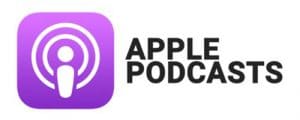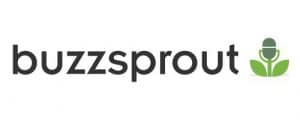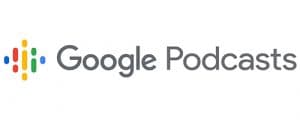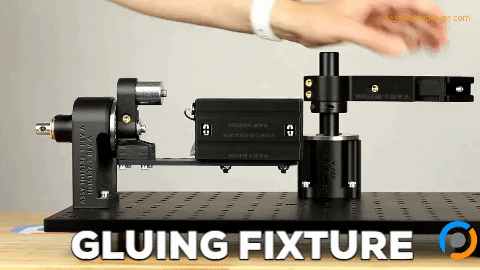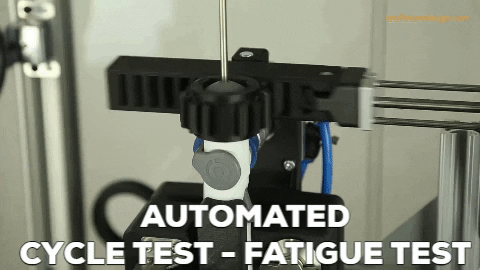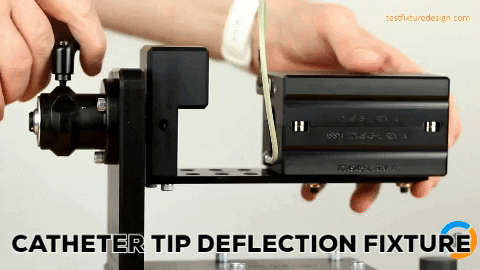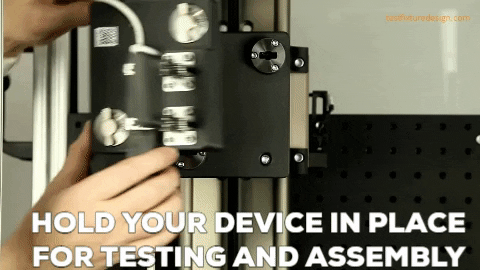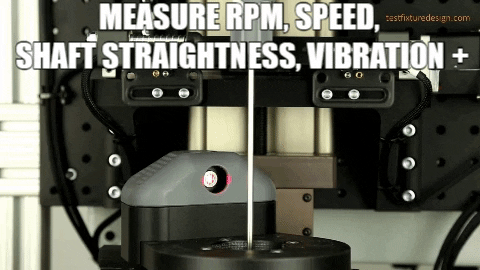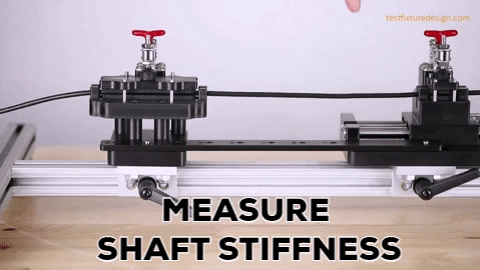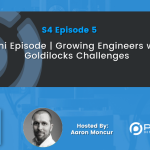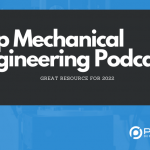Jon Hirschtick | Founding & Developing the Solidworks and Onshape CAD Systems
s
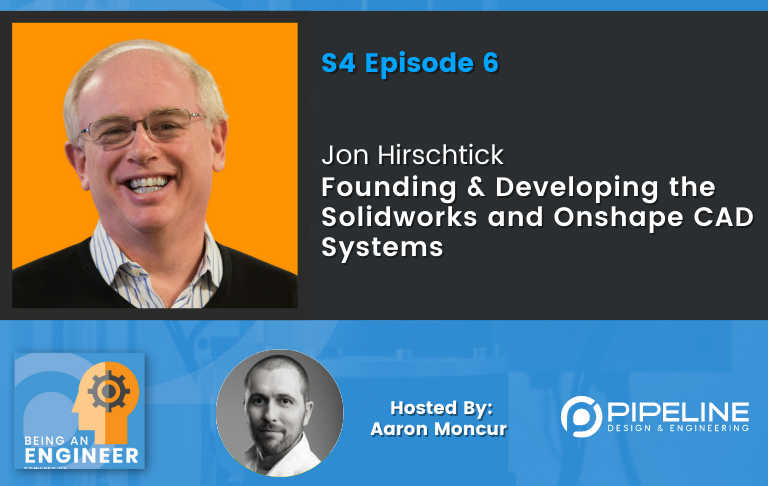
Who is Jon Hirschtick?
Founder of both Solidworks and more recently Onshape, Jon Hirschtick is a legend in the CAD industry. In our conversation, you’ll hear about how Solidworks was started, how it grew, and how it led to Jon’s decision to found Onshape. Listeners will also learn about how Onshape is making CAD design faster and more collaborative through its suite of innovative features and native cloud platform.
Jon is also the Chief Evangelist at PTC, where he focuses on Onshape. Onshape is the world’s first and only cloud native CAD and PDM system which includes rendering, collaboration, workflow, analytics, and many other tools. A former General Manager as well as the Co-founder and former CEO of Onshape.
Prior to Onshape, in 1993, Jon founded SolidWorks and served as CEO, Group Executive and Board Member until 2011 watching SolidWorks grow to 2 million users and over $500 million / year in revenue.
EXPAND TO VIEW EPISODE TRANSCRIPTION
SUMMARY KEYWORDS
solidworks, people, ptc, cad, built, engineer, files, run, product, customers, company, cad system, features, users, system, jon, problems, big, modeling, autocad
SPEAKERS
Presenter, Jon Hirschtick, Aaron Moncur
Presenter 00:00
Hi, everyone, we’ve set up this being an engineer podcast as an industry knowledge repository, if you will, we hope it’ll be a tool where engineers can learn about and connect with other companies, technologies, people, resources and opportunities. So make some connections and enjoy the show.
Jon Hirschtick 00:18
I could have given up I could have given up when people said no with SolidWorks. And, and I think as an engineer, I can tell you two things. One is, if you try, I can’t guarantee you’ll succeed. But I can guarantee that if you don’t try, you won’t succeed. And the other thing is failures and problems. Those are the neighbors of successes.
Aaron Moncur 00:54
Hello, and welcome to another wonderful episode of The being an engineer Podcast. Today we’re speaking with Jon Hirschtick, who is a legend in the CAD industry. If you’re not familiar with Jon by name, you certainly will be familiar with him by his product which we will get into products, multiple plural. That is, Jon is currently Chief Evangelist at PTC, where he focused on focuses on onshape, the world’s first and only cloud native CAD and PDM system, which includes rendering, collaboration, workflow, analytics, and many other tools. Jon is also the former former general manager as well as the co founder and former CEO of onshape. Prior to onshape, in 1993, Jon founded SolidWorks and served as CEO, group executive and board member until 2011. Watching the platform grow to 2 million users and over $500 million per year in revenue. Jon, what a treat it is to have you on the show today. I feel like I’m speaking with CAD royalty. Thank you for for joining us on the being engineer podcast.
Jon Hirschtick 02:02
Well, Aaron, I’m delighted to be here. And thank you for making such interesting podcast episodes for the engineers of the world that we both are here.
Aaron Moncur 02:11
So welcome, right? Yeah. We love doing this. Well, same question. I asked everyone to get started. And then we’ll dive into SolidWorks and on shape and all those wonderful things. What made you decide to become an engineer?
Jon Hirschtick 02:24
I think it was, as a child, I found I liked building things, you know, building it was just cool to build something and see it work. Now. Mind you, I am not one of these people that grew up in a household that building things you know, I didn’t I grew up in a small apartment in Chicago, the only tools we had in the house were pliers and a pair of pliers and a screwdriver that was in the kitchen drawer. I didn’t learn to at home any of this we didn’t we didn’t take apart cars or build anything. But what happened was I had a friend who was into electronics and he invited me over we went in his basement yellow data workbench, we built electronic circuits and just as soon as I had any, any experience building things, and then also fueled by the space program when I was a kid, which is back now but you know watching rockets take off for the moon, you know, I’m talking about 1960s and 70s. And then also, I started subscribing to magazines like Popular Science and Popular Electronics. And it was just that draw to make things I think
Aaron Moncur 03:32
yeah, that’s I can relate with that myself. I loved building things when I was a kid everything from Legos to clubhouses and everything in between. Well, we will certainly get into your your current is more than a venture your current activities with onshape and PTC but I was hoping to spend a few minutes talking about SolidWorks. Before we dive into onshape, I read some stories about where the funding came from for SolidWorks back in the 90s. And they they had to do with gambling and Las Vegas casinos. And you tell me, is that true? Or is that apocryphal?
Jon Hirschtick 04:08
Well, it’s pretty much true, you know, and I’ll give you the truthful version is that I was able I was in a financial position to start SolidWorks which required me to go about one year with no real income and spend money to you know, to rent office space to buy a phone system to tell you know we’re talking 30 years ago or so. Yeah, remember it was a different world. So I bought a phone system and buy a computer which were much more expensive relative to today’s prices anyway. That ability for me to have the money to start the company came from my prior experience as a professional gambler professional blackjack player with the MIT Blackjack Team. So you know I made money playing blackjack and that allowed had me to be able to start the company. But it’s not like we took company money and gambled with it or anything. No, no, no, no, this was all personal. I was personally enabled by that.
Aaron Moncur 05:11
Still, that is that’s wild that you were able to earn enough money gambling in Vegas to start SolidWorks I just I love that. It feels so I don’t know, Wild West, in a way. It’s just a great story.
Jon Hirschtick 05:24
Well, you know, it was really exciting. And since since that time, there’s been, as you know, or may know, there’s been a movie, TV shows, books and so forth about it. And but at the time was just a lot of work. Just like engineering is the parallel I draws, just like some some, some listeners build exciting products that everyone would know about, you know, like, I suppose if you work at Apple, or you work at Tesla, or you, you know, you work in a toy company, and everyone knows your products. People say to you, Oh, it must be so exciting. You’re thinking, well, it is exciting, but it’s mostly just a ton of work. And in the same way, when you hear about Blackjack, it’s kind of like, you know, it sounds so exciting, but it is exciting, but it’s a ton of work. Really?
Aaron Moncur 06:15
Sure, yeah. Amen to that. Well, let’s, let’s go back in time a little bit. And this is in the 90s. And back at that time, AutoCAD was kind of the big name maybe not quite the only name but but certainly by far the biggest name in CAD. And they they dominated the scene, PTC was was on its way as well. How was SolidWorks able to get its foot into what was essentially AutoCAD market back then.
Jon Hirschtick 06:45
Yeah, well, Aaron, you’re really it’s really smart. Have you dimension AutoCAD because so many people talk to me about those days. And mind you were talking 30 years ago, SolidWorks was founded 30 years ago. 1993. So you really, you know, it wasn’t five years ago, 30 years ago. So think about the world. So AutoCAD is like, these days, it’s forgotten. I mean, really, I don’t mean it’s forgotten and nobody uses it. There’s a lot of people use AutoCAD. It’s a good product, people are very successful at it. But in the mechanical engineering scenes, the world onshape SolidWorks. Creo is in and so forth, and x so forth. You just don’t hear about AutoCAD at all. Like, you know, you just don’t hear about it as being used so much. But anyway, at the time, AutoCAD was everywhere, and it was viewed as almost a monopoly. You know, it was viewed as just a standard standard CAD system. But for 2d, 2d drawings, you know, doing drawings, and I don’t mean for your listeners who grew up using SolidWorks, or use onshape, or use creo, or modern systems, they think, oh, drawings, you take the views of the 3d model. No, no, no, I don’t mean taking the views of 3d model. I mean, laying out lines in the drawing. That’s what people did with AutoCAD. So AutoCAD was sort of everywhere standard everywhere you went. And then also what had happened in the late 80s. Pro engineer came along from PTC, where I worked now, at the time, it was called Pro engineering. And today, it’s called it’s evolved into creo. It’s evolved in many ways. But pro engineer was a landmark 3d product, not the first 3d product. But the first one that really worked well that engineers could could really use. Real engineers could use to make product models. So you had this. You had this world of AutoCAD everywhere in the 2d market and pro engineer, not everywhere, but the clear leader in 3d. But there’s a lot so you want me to get to the vote here. So what was the room in the market? Well, AutoCAD was a DOS based product it ran on a PC under dos. I don’t know some people don’t even know what dos is, that is the operating systems before it was windows. So it ran on PC and it was like $4,000, which is relatively cheap at the time. Compared to other cat, but pro engineer while it was 3d, it was pretty expensive. $20,000 a license typically, and it ran on Unix, Unix workstations at the time and some of your listeners don’t even know what I’m talking about the Unix workstation. Imagine a purpose built computer that ran something like Linux before there was Linux it was called Unix. And and these systems were very hard to use, you know, command lines and weird weird UI. You know, the pro engineer UI was really weird. And and so so you had AutoCAD with the right kind of price and running out on a PC. That was good idea. But it was only 2d. You had pro engineer with the Right modeling technology 3d but expensive and hard to use. And yet nobody is in Windows or Mac style you eyes, which I said, Wow, that’s the future. So the idea of SolidWorks was pretty simple. Have the 3d, like pro engineer had the 3d power of pro engineer, have the cost and PC platform of AutoCAD, and have the windows SNESs of Microsoft. And we felt that would be overall a formula for bringing through making 3d as popular as 2d was that every engineer could have a and that’s the SolidWorks formula. Well, well,
Aaron Moncur 10:39
this this brings me back when I was a freshman in college, which is the first time I ever used a CAD program. It was probably pro engineer. And I remember that we were on Unix systems back then. And oh, you want these? Oh, yeah, you don’t hear anything about a Unix system. But, you know, I think we’re probably on the tail end of that era.
Jon Hirschtick 11:01
Yeah. I mean, Unix has come back as Linux. And by the way, you know, if you know, Linux, there’s no such thing as Linux, really, there’s Linux based operating systems. And there’s, you know, 100, varieties, you know, to Red Hat, whatever. But anyway, Linux based operating systems have come back quite a bit. And what we’re seeing is particularly among users who are entrenched in software, they have a great interest in running their cat on Linux. And really, the only pro grade CAD that runs on Linux, of course, is on shape, you know, that you can use in a browser. And so we get a lot of Linux fans come to the onshape. You know, show, you know, show up in our user base. But yeah, so you’re obviously older than I thought. To go. I
Aaron Moncur 11:44
have a baby face. Yeah. People often mistake my age for like, 10 years younger. I’m 43 right now. So I’m not old, but I’m not young.
Jon Hirschtick 11:55
You were probably at the tail end of the Unix workstation stuff, then. Yeah. Yeah. By the way, people told me when I went around to start SolidWorks, I told people what I was doing, you know, engineers, I said, Hey, what do you think? And they’re like, spared idea. world doesn’t need that system. You know, AutoCAD, everyone uses AutoCAD, and people who have the few people that need 3d use Pro engineer. And they’re already doing Windows versions of AutoCAD and pro engineer, and they told me the PC Windows isn’t powerful enough, because there was no 3d graphics drivers for Windows yet. So it’s not powerful enough, it’ll be too slow. Windows is slow. And it was at the time, okay. And they also told me, nobody will take it seriously. People won’t trust it. It won’t be secure. You’re running, running engineering on Windows is all the stuff they told me. And I’ll just tell you, I got turned down by zillions of investors. I went to investors and said, here’s my plan. Now. You know, I’d be like, Yeah, we’re gonna build a complete CAD system, get out of my office, you know, it’s like, and we’re going to compete with AutoCAD and PTC PTC at a time one of the most successful companies in the software industry. Get on my office, you know, got gone. I had one venture firm, didn’t even finish the meeting. And we have like, an hour meeting. And like, 15 minutes, and they’re like, Yeah, I’m gonna end the meeting early. I’m like, we haven’t even shown you the demo. Yeah, we’re not gonna invest in this. You guys are crazy. You know? So. So it was like, no, no, no, no, no, no, no, no, no.
Aaron Moncur 13:37
How did you finally get to? Uh, yes.
Jon Hirschtick 13:39
So we kept trying, you know, we believed in what we’re doing, we kept trying. And then also what really helped was we added another team member who had been one of the founders of PTC. And when he came on board, that gave us more credibility. And we kept trying, and our prototype got better and better. And then I still remember the moment that it all tipped, we were in this meeting with venture capitalist. I don’t know if I should say who I don’t think it’s a problem to say this fellow, John Flint, great guy. He was at a company called burr Egan del Yash. And he came in late, you know, the meeting was, let’s say, it was at two o’clock, you know, we’re sitting in the conference room, he rolls in at like, 218, you know, for an hour meeting. And, and I had told my co founder, Scott Harris, just once we get to the demo, just keep it rolling. Keep the tape rolling, no matter what, you if we start talking don’t stop the demo, because I want to have the site, you know, can is a pretty exciting demo if you watch it. So I just want that demo. Keep going if we don’t stop demoing. Okay, okay. And so he shows the prototype and we’re showing the demo and he’s this guy, John is very disinterested. And then there’s this moment where like, goes on. He’s like, Wait a minute. This is all running in Windows on a PC. Yeah. And that’s 3d model. Yeah, we’re showing solid model and drilling holes as of yet. Yeah. He’s like, and nobody else really runs in Windows with a real UI like, you know, Word or Excel. No, no, they don’t. You know, he goes, and he points to my co founder, you know, you’re one of the founders of PTC. And he looks at me asked me, he goes, Okay, I’m in, that was it, he goes, I’m in. He says, I want to fund this deal. And then, and the other person I’ll really give tons of credit to actually, I gotta be fair here. John was the second investor to commit the first investor to really get what we were doing was Oxo be Shara of a then Atlas venture today at a new firm called bow coons that Axel just created. Fantastic venture investor who focuses on on hardware and industry. He does other deals, too. But he really knows the hardware world. Anyone out there trying to raise money. If you’ve got a hardware startup, you want to contact Oxwall at balcons. Great Investor, Axel believed in us first. But we needed another VC and that’s when we got got John and we ended up getting northbridge as well. But But Oxo was amazing. He got it. He understood CAD, he knew the market and he got it. So anyway, I just wanted a great story. I don’t want to I don’t want to chew up all the time here. But it was a fun time.
Aaron Moncur 16:22
You had me on the edge of my seat? Yeah. Okay. Excellent. Yeah. Well, what were some of the biggest problems that your team had to overcome tactically, as he developed? SolidWorks?
Jon Hirschtick 16:33
Well, a couple big technical problems. One is nobody, nobody had ever built a solid model or on a PC or on windows before, not one that worked, you know, people had built little ones, but you know, you know, engineers need a lot of power in their tool. So no one had built one that worked. That was one big problem. And Windows was a little bit of a green banana, you know, so like, like, so that was one, you know, the platform was was an issue. The second thing was, we were the first successful production level CAD system that used component technology. And no one had done that successfully before, meaning we licensed a lot of chunks of technology, from other companies. Particularly like like, for instance, the geometric modeling engine, we licensed parasolid, from what was then Unigraphics. Now, Siemens, we license translators, we in people at the time, the kind of wisdom in the cat insiders was, well, that’s okay, if you’re doing some small application. But if you’re doing a real application, you need to build your own and be kind of like talking about batteries and electric vehicles today. Aaron, if you if we were talking and we said, I said, Oh, I want to build a, I want to build my own electric lawnmower, you’d say you can order batteries online, and it’ll work. But if I said I want to build a car company to compete with Tesla, you’d be like, You better, you better have your own battery plant, Jon, because you’d have to build that yourself. And I’d say, Well, why is it? Well, no one has ever done it without, you know, that scale, you know, you can’t just go down the road and, you know, order it off Amazon Well, times change, you know, so it was kind of a radical idea. So that was that was probably the the two big problems that hadn’t been dealt with before were the Windows platform, which was a little green, and underpowered for the job. And, and the whole idea of doing it and Windows UI, we had to think about how do we take the paradigms of Word and Excel, at that time, were the defining user experiences that we were shooting for, and put cat in there. And so that those were the technical challenges. Besides one more technical challenges. Building a CAD system is just freakin hard. You gotta be a little bananas to try it. Okay. It’s a very, very, so that wasn’t unique, because it was hard to build these other systems, too. And so I don’t want to forget that point.
Aaron Moncur 19:01
Yeah, for sure. How long did it take before you started getting some real traction and success with engineers?
Jon Hirschtick 19:08
Let’s see, I would say from the early days of SolidWorks, to getting some traction about three years, you know, in terms of like, it was probably six. Yeah, we well, at the end of 95, we shipped the product and so in, in a trade show called Auto fact, that was a big event. So in 96, were our first users now, at the time, honestly, between you Amir and the amount of functions in SolidWorks. In 1996, were a little light. By today’s standards, you know, by today’s standards, he get laughed out of the room, you know, is missing so many things. But at the time, you got to remember expectations were lower, you know, this would be 1995 96. So 2728 years ago, people didn’t expect as much in the CAD system, but we did have people using it, and I would say it took to hit its stride. Did you know it was, you know, it was seven, eight years to really get the system where, where it was hitting its stride, I would say in that era, you know,
Aaron Moncur 20:11
I remember the first time I used it, it was an internship I had in college and I had been used to using, probably, and then wildfire. And so moving to SolidWorks. At first, it was really tough for me, because I was used to looking back the Pro interface was so clunky back then, but I was just so used to it, you know? Yeah. And then I moved to SolidWorks. And I remember little things like, there were there were animations. Like, if you wanted to look normal at a surface, you didn’t just snap normal, it was kind of a smooth animation. And I thought, Oh, that’s so cool. You know, just these little things like that. And then after not very long, I thought, well, I’d never want to come back to, to probably because SolidWorks just is so much easier to use. I think that was 2004. So by that point, to me, at least it felt like a mature product that that competed well with with pro a.
Jon Hirschtick 21:06
Yeah. 2004 by 2004. You knows pretty, pretty good product. Now. SolidWorks doesn’t never had everything probably had, but it had enough. And yeah, that’s right.
Aaron Moncur 21:17
Yeah. Well, once it did become established, and was being used by engineers around the world, was there ever anything that surprised you about how users either were? Or were not using the application?
Jon Hirschtick 21:32
I think I was surprised. Let’s see, was I surprised? I mean, not principally, you know, SolidWorks was a company, it was a business that pretty much did what we set out to do, you know, it wasn’t like, like, a lot of companies start doing one thing, and then they pivot to do something else. You know, like, you know, Apple is found to do computers, but today, I believe most of the businesses, phones and iPads and music, you know, and streaming television, you know, where did that come from? Yeah. And, and but SolidWorks, I would say pretty much we built the product we set out to build it was used largely in the way it was. And I could think of some extent, you know, some interesting things. And people probably built bigger things with it than I might have anticipated. And I think the size of teams that started to us it was it was surprising to but no, it was, you know, it wasn’t a huge, you know, huge pivot in what people did with it versus what we expected.
Aaron Moncur 22:35
Did the magnitude of success ever surprise you? Or did you always kind of have a feeling that yeah, this is this is gonna blow up and be huge.
Jon Hirschtick 22:44
I think I always had the feeling that this was going to be huge. I mean, I would tell people, when we were building the prototype, I got an argument with a vendor one day said, Look, one of these components, suppliers, the people who built Asus, I flew out to Colorado using frequent flyer miles. And I met to the guys and I said, Look, you know, they’re like, you know, yeah, we’re being nice. We’re letting you try it out for free, you know, you’re lucky to have it. And I’m like, Look, your product isn’t that great. But we can help you make it a lot better if you work with us. And they’re like, Who are you, man? You don’t even have any amendment money to pay us. I go, Look, I’ll tell you right now, if you make us successful, we’re going to be a bigger customer than all your other customers today put together. That’s what I told them. He’s like, Get out of here. John, here, y’all. You’re so I wasn’t being arrogant. I was just being like, so I always thought SolidWorks would become an extremely popular CAD system. What I didn’t understand is how big the CAD market would get. So our place in the market was pretty much what I thought would happen for SolidWorks. What I didn’t understand was how big the CAD market we’d get. I remember sitting around with John McElhaney, who was the second CEO of SolidWorks. After I was, we were like, how big can this get? And we’re like, well, maybe it would get to $300 million a year. Well, today, it’s probably a billion dollars here. I don’t know you have to look. So system, financial statements are so big, it got way bigger than we ever dreamed it could more users use 3d CAD, but the position in the market was, you know, I mean, you know, it was pretty much what I had thought what I told people would happen when we finance the company and built the product.
Aaron Moncur 24:28
That’s amazing. Yeah, like you said, not often does the company end up where it thought it was going to be, but SolidWorks did so. Congratulations. What a huge accomplishment there. Apparently that was not enough for you. You wanted to do it again. And and so now we get into onshape. Let’s see. For those who aren’t familiar with onshape, can you just share like a 30/62 summary of what onshape is and what its benefits are over some of the other major CAD systems out there?
Jon Hirschtick 25:01
Sure, well, onshape is the first and only true cloud native CAD and PDM. System. So what it means is cloud native offers huge benefits and solves huge problems people have with CAD and PDM. Problems, everything from installs, downloads, service packs, special computers and all that nonsense. License codes. Is everyone on the same version at all goes away. Everyone in the world is on the same version. and, and then also the data management and collaboration. Yeah, who’s got the latest copy of the file? I don’t know. Oh, we locked it in a PDM vault somewhere, you know, who’s running the PDM? Vault? I don’t know. Yeah. Like all that goes away. And it’s just there. So we’re kind of what we were, we are complete. And we’re pro level system, we got incredible power and functionality and all these areas. And onshape was built to solve a lot of the problems we saw with the old style systems. today. It’s used by Oh, I think it’s over 2 million people, maybe more. And in 1000s, and 1000s, of companies and schools and all that. And so we’re, we’re really, you know, really excited by most of all, what our users do with onshape? And how much they love it.
Aaron Moncur 26:17
At what point did you start having this notion that there was a better solution for Canada wasn’t being solved by SolidWorks, or any of the other CAD systems out there. And you know, that you might like to have a second shot at go another round with developing a CAD system.
Jon Hirschtick 26:33
So it was when I visited users. Back when I was at SolidWorks, I would visit users and customers I’ve always visited uses the customers by the way I worked in this industry. Before SolidWorks, I found another company, no one’s ever really heard of it, called premise. And before that, I worked at computer vision. So I started in the CAD business in 81. Aaron 81, and I’ve worked in it ever since. So that’s 40 This is soon going to be 42 years, I’ve worked in the CAD business consecutively. Okay, lots of wisdom in that cat area. Yeah, well, wisdom, lots of wisdom, lots of time to eventually do it. Right. You know, it’s like the monkey throws darts, you know, like, I’ve thrown enough systems at the CAD dartboard, and a couple of them are bull’s eyes, you know, whatever. But But anyway, you know, my whole journey is really about studying users problems, what are the product about you know, I, I, I develop products that other people use to develop products. So my customers are product developers, your listeners, you know, engineers, and so I’d see the problems they had. So back at SolidWorks. Yeah, good news. You know, SolidWorks was a lot easier in 1993. Hey, it was great news that SolidWorks a lot easier to use than pro engineering had a Windows UI. And it was, you know, ran on a PC, that was all great. But then you go into customers, and I would go visit them. And they would say to me, they’d sit me down in a conference room, I still remember visiting a medical company in Boston, I made the coolest heart heart valve repair or heart hole repair systems out of memory allies. I mean, I just couldn’t wait to talk about the product. But timeout before we talk about the product into the conference room, and I get two hours worth of anger really over problems involving you? Well, John, where you know, you got 24 users using SolidWorks 2014. We thought maybe, I don’t know, I kind of never really imagined big teams using SolidWorks. But okay. And, and we’re trying to we have to buy everyone these special computers. Okay, they’re doing that. And then they got to do installs and they fail half the time. I mean, anyone’s is anyone who’s tried to insert anyone who has installed cat has had installations fail. Right, Aaron, you’ve installed shad? And all your installations gone smoothly? No, they have not right. I mean, you know, they fail. And so the first thing they complained to me about was just getting the darn system running, you know, it was just cost him all this time. And they’re like, like, Well, whenever we add a new person, we have to go through this again, and we’re adding people all the time. You know, we hire somebody new in a city, we got my computer, we got a license COVID download it, install it. Okay. Then the other problem I had is like, like, they’re like, we we need to get everyone on the same version of SolidWorks. And we’ve got our vendors on one on different versions or customers on a version we’re on a version. We can’t get everyone on the same version. So we run multiple versions. Yeah, like okay, and well, the multiple Bert Of course, the files aren’t compatible. We all know that, you know, you can go forward we can’t go back, you know. And then again, you’re nodding your head, right. And anyone who’s used CAD knows these problems will exist to them.
Aaron Moncur 29:59
Like, well, it’s just that sorry to interrupt. It’s horrible that there’s versioning. Right. So you understand why you can do it from a business standpoint, but it’s just the pits for years.
Jon Hirschtick 30:12
It’s not just the business is technology, you know, the technology was installed software, and files. And by the way, I’m gonna go through a few more problems, because you say, Why did I start SolidWorks? Well, I want to start on shape. Well, let me tell the whole story. So so there’s that. And then they tell me that? Oh, well, what we did is we decide to run two different versions of SolidWorks. Two isn’t really enough, but it’s better than one, you know, they’d want to run three or four. Well, so then we discovered that the license code manager, you can’t have two of them on the same network. So we set up a separate network. For the people who are on the other version of SolidWorks. I might make my freaking head explode. I’m like poor you. Yeah. Like with these multiple versions? What should we do, Jon? And I’m like, I don’t know. Like, I don’t know what you should do. And I’m thinking, I don’t even I wrote this system. I’m a founder, the system and CEO of the company for many years. And I don’t even know what you should do to fix this. I’m thinking, how did they even get the product made? I don’t understand. And then, by the way, then, not done yet. Because then they’re like, well, we also want to talk to you about PDM. And the files. I’m like, PDM. Oh, no, because I was always
Aaron Moncur 31:28
going through this right now.
Jon Hirschtick 31:29
Yeah. Oh, you are okay. Yeah. You know, why? Because you know, how many people have I’ve been very lucky in my career. And people come up to me and say, Oh, John, you know, on shape. I love it in SolidWorks I love SolidWorks I love the CAD you built. You know what, no one ever said to me. PDM works, John, you build PDM I love it, I can I take your pick Hegyi autograph because I love PDF said nobody ever. Now with onshape. People love PDM because we’ve reinvented it we have built in to get to admin. So what they said to me is, well, we have a vault setup, and we try to get everyone to lock files, and copy it out, you know, but we never know who’s really got the latest version of files in the vault zone computer, because we can’t get people to do a locking because if they do try and do the locking, well, then it just slows people down. And what we did is so that what we started to do is we put each other’s passwords on the walls of the cubicle on post it notes is a good idea for security. Right? Okay, you know, and I can’t I’m not making this up, man. You know, this is what I saw. Okay. And we tried it solver. So like, let’s try the cloud. By the way, all the vendors do cloud, right? So my competitors all say, Oh, we’re doing what John’s doing, we run in the cloud, except they took 30 year old code. And they sort of use the cloud a little bit to help it along in some ways. But that’s not the same thing. So at the same time, as I see this stuff going on with customers, and we you know, we’re trying to our best, but it’s hard, because files are not a good way to collaborate. If you think about anyway, the same time I saw what was happening with Salesforce, workday, Zendesk, Google Docs, NetSuite basically everything cool, was going to the browser, and it wasn’t just going to a browser, see, this is the key part, you know, you don’t just take a file based system, and say, I’m gonna run it in the browser that doesn’t really solve any process, a little bit of problem, not really big problems. You really have to rethink it. So it doesn’t rely on files and copies of files. And you might say, Well, what’s wrong with files? That works fine? Well, it doesn’t work fine for most business systems, like do you use anything? You ever use something like Salesforce? You ever use an accounting system? NetSuite, okay? Or QuickBooks? I use Quick, quick. I use QuickBooks, even personally for a while online. And but but if you use NetSuite, if you do accounting, use Salesforce. Here’s how you don’t do accounting, you don’t say, I need to enter a debit in the ledger. Everyone stop using it, please. So I can lock it. And I’ll take a complete copy of the ledgers of the company onto my local computer. And I’ll edit it and then I’ll check it in and then you can edit it. If you tried to do accounting that way. What would happen, your company would would be screwed. You know, you can’t do that. You have everyone access your database. So
Aaron Moncur 34:35
I laughing because we actually did that a long time ago with QuickBooks Desktop, I would send the file to our accountant, they would do things and they would send it back to me and it was just a nightmare. So yeah, so he was QuickBooks understand exactly
Jon Hirschtick 34:48
files. If you use NetSuite. There’s no file because you need 100 People at it even once. So anyway, I saw was having a we can solve the problems people have with SolidWorks Recent files and all that. But we have to build a new system that is built, you know, not like word using files and installed software, but built more like Google Docs or NetSuite, or Salesforce. So our design for onshape was informed by those kinds of systems that didn’t use files and didn’t use copies. We have PDM, hey, you need revision control, you need release processes, we do all that stuff. But we don’t do it by files and locking. Okay, we do it using a database that’s in one place. And in the cloud. There’s no copies, any anything, there’s no chance to two people being on different version of software, because you’re all using the same master instance. Okay, to record this podcast, you’re using a cloud based system you invited me to I don’t know if I should say the name of it. I didn’t even know existed. It’s look cool system error. We’re recording this in a browser. I didn’t have to install anything. We didn’t have to ask which version of the software should I use? Because it’s all in the cloud. So so we solve all that there isn’t that we don’t worry about installations problems, because there’s nothing to install with onshape. There is no installation. You know, you don’t have to worry about what computer you have. Because we run on every computer. If you have a Linux machine, fine. Mac fine. Chromebook. Fine. You don’t even need a computer iPad runs on that Android tablet. Yeah, sure. What about a phone? Oh, yeah. What about an Android phone yet? Runs on an iPhone? Yeah, runs on that. What about my old computer? It runs on that too. You know, it’s like, like, you don’t have to worry about installing things. And you collaborate. Oh, my gosh, to collaborations unbelievable real time collaboration. And so anyway, I should, you know, go on all day. I know you have, you know, I don’t want to make your make this into a five hour podcast. So
Aaron Moncur 36:55
well, I have a couple of thoughts to interject. Just supporting evidence, I guess of everything that you’re saying. The first time I used on shape was probably a couple of weeks ago in preparation for for this interview. And so this is what is this January 16. Right now that we’re recording. And I decided that for Christmas, one of the things I wanted to do is get a gift for my family that would help us spend more time together. And so what I did was I bought a 3d printer, we have plenty of 3d printers here at work, but you know, they’re at work. And so I bought one for home. And my kids have two boys and a girl and they’re eight to 15 right now. And so they’re in that, that age where they’re young. And but that’s so young, that they can’t, you know, do things. So we got this 3d printer. And then of course, we need, we need some CAD system to create files to 3d print. And I thought, Well, I’m not not gonna buy a bunch of SolidWorks licenses, right? And so I thought, well, onshape I’m doing this interview pretty soon anyway, it would be great kind of research for it. So we all download it on shape and or not, I’m sorry, not downloaded it down, signed up for an account for a foreign shape. And my, my, my daughter, she put it on her iPad, and I was it. At first I thought, Okay, well, it’s in a mobile application, right will probably be able to view a few things. But yeah, it’s a full blown cat application on an iPad. And this is not a top of the line iPad, it’s a little bit older model and it ran great, you know, you could do all the different things it was it was really cool. And then my, my dad also has installed on shape and he lives you know, not with us. So he’s he’s remote. And we’ve we’ve been able to share files back and forth and collaborate on them. This is just it’s a really cool platform. And one more thing I’ll add, when I first opened it up, I was almost this was like, like a gut reaction kind of almost a little disappointed by the lack of snazzy graphics, I’ll call them. But what I have come to appreciate is the simplicity of the design this, it’s so unpretentious. And I really liked that now, it did not take long at all to get over that initial Oh, there’s not a whole lot of like color or cool graphics. It’s I love it actually, I think it’s really cool. So anyway, a few thoughts by a very new user of onshape. And it’s been really easy to pick up my boys. They asked me hey, how do you do this thing and an on shape? And well, I’m like, Well, I don’t know. But let’s take a look. And I’ve used SolidWorks for so long that when I’m using on shape I think well there’s I know there’s a way to do this. I just have to find the right button. And all the buttons are intuitive and things are laid out pretty intuitively. So it’s it just has not been very difficult to for me to transfer over to onshape and I have actually a couple more questions. about that. So it was easy enough for me to transfer over because we’re just we’re, you know, creating a few simple things in the family with my boys and my dad and things. But if you’re a company and you have a big team of people who are all using SolidWorks, and you’re heavily invested into SolidWorks, you have this whole history of SolidWorks files. How do teams like that transition to onshape? Are there tools that help facilitate that? Or do you basically just say, everything before this date that was on SolidWorks? That stays on SolidWorks? And everything after this date will be on onshape?
Jon Hirschtick 40:33
Well, it depends on the situation, the business, but there are there are a lot of companies that move a lot of data into onshape, from SolidWorks. So there’s the question of moving the people moving the data and moving, you know, sort of the processes and connections to other systems. And so to start with the data part, it depends what kind of needs you have for the data, most people need to certainly access the old data, if you just need the shapes of data. So you want to keep old designs around because you’re going to use them as starters for new ones. But you’re, you really just need the geometry of it, not the whole feature history or assembly made sense of it? Well, obviously, we do that very, very well reusing the geometry. But if you are going to be you know, there’s different needs. Some people have big component libraries that they use, you need to bring those over, you know, so each approach takes some some work. And we have a customer success team that will work with customers on how to approach it. There is no magic solution that just brings it all over. With people. Yeah, you run into a couple kinds of people, you run into people who who will, you know, never change tools. You know, they’re like, I use SolidWorks. And that’s all I’m ever going to use. You know, same way people said to me, I use Pro engineer, it’s all I’m ever going to use. I use AutoCAD, I’m never going off on a cafe people used to ask us, What do I do with all the AutoCAD files? What if I get SolidWorks and I give them the same answers, that depends what you need them for, and so forth. Still no way to edit, you know, to really edit those AutoCAD drawings in SolidWorks are other products now that dasa system has, and so forth. But anyway, and there’s great tools from great Burt in Germany, they have this great tools, Aris ARDS for editing, AutoCAD, but anyway, back to onshape. So you got to bring IE, we can bring in huge numbers of files. And there’s some great tools now that can make migrated data much smarter and easier to do in bulk. We’ve had people migrate hundreds of 1000s of files, I mean, a single customer up to hundreds of 1000s I don’t think I’ve heard of any million file migrations, then moving the people takes training. Now the interesting thing is, the emerging generation is way more comfortable with onshape, as you saw in your own time at home. So every day, a little slice of the workforce that looks a little like me, like you’ve spent 42 years doing this stuff. They retire or step out and a new generation comes in and they don’t by the way, the new generation doesn’t even know what files are, you’re gonna have to train them. In a few years, when you bring in new hires. If you want them to use files in Windows, you’re gonna have to train them in what a folder is, and what file copying is. And you’re laughing, but it’s true. Look at your kids, they don’t know money that junk, there isn’t I don’t know, then there ain’t no kids using Windows computers for schoolwork at school anymore. They’re using iPads, Chromebooks, you know, cloud based tool. So anyway, migrating people, it depends on the kind of people you get, then there’s process migration. And the answer is when people, people ultimately will change their process because of onshape. But it’s changed for the better, they discover that they can use more of an Agile process than than a waterfall process. And that can be that can be the most uncomfortable part of the whole thing is it’s one thing to move a bunch of data files, okay, and live with whatever data you didn’t bring. And whenever it’s another thing to say, I need to learn to use different icons for you know, different workflows for part modeling the way you know, you’re discovering, but the hardest thing is my team can work differently. What do you mean, we can all work on the assembly at the same time? Oh, yeah, you can well, wait a minute. That’s not how we do things normally. Well, could you work faster this way? Yeah, it’s a little uncomfortable. So So what’s happening is teams work faster and there’s process changes. And ultimately, that’s the the real benefit isn’t just hey, I saved a little on the install time. The real benefit is making more innovative making better products, getting the changes that you want it into this release of the design, and not the next product because you can make changes Faster, be more innovative because you and three colleagues collaborated on something, you didn’t have to wait two weeks. So design review, you all saw each other’s work in real time. He said, Oh, man, I see an opportunity here. That’s what’s making better designs happen faster, and onshape. That’s the biggest improvement. And the biggest thing to deal with in migration is process change.
Aaron Moncur 45:25
About a year ago, we started using Office 365 products. And these are great because it’s similar to Google Docs, you can collaborate in real time. And when we started using them, we thought, well, that sounds like a useful trick that maybe we’ll use here and there. And yeah, we found is we use it all the time. And it’s really, really helpful. So I can understand the value in being able to collaborate on your CAD models in real time. It just blows my mind, right, like, in Word or Excel. Yeah, that’s cool. That’s helpful. But on a CAD assembly. Wow,
Jon Hirschtick 46:02
that’s exactly. You hit the nail on the head, Aaron, people say, Oh, well, I suppose that I might use that as if they’ll planet people like, Well, I suppose once or twice a month, I might invite some colleagues and we’ll say, let’s model together, what happens is, once or twice an hour, you run into each other in the model, right? And you’re like, Oh, I didn’t realize that, that Jane’s working on changing that, fill it? Wow. If she’s going to do that, I can make this whole part on a different machine and save us some money. You know, it’s like, let me let me send a message. Now, by the way, a message doesn’t mean an email, because emails too slow. If you use things like teams or slack, you know, today, I go visit the fastest moving customers. They don’t you know, emails out, you know, email is to this new generation, what paper mail is to my generation, like, I don’t have time for that. I’m using texting or slack. But anyway, yeah, that’s it, man. That’s it. So you’re discovering magic and the power? And so this is what we’re bringing to, to the world of CAD and PDM.
Aaron Moncur 47:10
Amazing. How about pricing? What is the pricing model? Like for onshape?
Jon Hirschtick 47:16
We charge just an annual subscription fee. That’s it, there’s no license fee, just annually for user? Nope, you just pay a subscription. People are always like, hey, what happens if I stopped paying what happens? My data? Well, we, we leave all your data there, you can’t edit it, you could access it, download it, whatever. You can, it’s all there. And unless you you can ask, you can close your account, because why but if you have a subscription, and you say, hey, this year, I don’t need it, I’m not going to pay it, the data doesn’t disappear very, it’s, that’s a myth. And so, so it’s just a simple annual fee. That’s it per per user annual fee on Oh, and we have a free plan. By the way, the free plan, like the ones your kids are using maybe the education plan, we also have a free plan for makers, open source kind of projects, pros use it to kind of kind of experiment with the system, if there’s any pros out there. We have a trial program where you can get the professional onshape for you know, for, let’s say, two weeks, or maybe three weeks, or whatever, you know, you can get you can you can you can trial, the pro version will say up with that with training and advice and all that. But also, some pros are just like, hey, I’ll try the free version. And I’ll make some parts I’ll see. And be careful though. Because like you say, when you look at it, you don’t see all the power. very deliberate design decision, by the way, it was, I’m sure it was the download of the UI, make it kind of more like the Google search page field and the than the, you know, 1100 color animation stuff. And we’re the ones who wrote all that stuff. So we know how to do it. The animation, we just decided no different aesthetic anyway.
Aaron Moncur 48:59
Yeah. One of the issues that I could see being a problem is, let’s say that, you know, company, ABC, we try out on shape, and we love it. We’re like, oh, we see the value in this. This makes a ton of sense. We love the usability, etc. But all of our customers use SolidWorks. Is that problem that your team has faced very often? And if so, how do you how does it How does Company ABC overcome that?
Jon Hirschtick 49:29
So the answer is you have to decide what’s most important. And so yeah, if all your customers use SolidWorks, that can be a problem. But do your customers actively edit SolidWorks level information? Or are you just sending them a model of a part and it’s essentially geometry? So if geometry transfer works for you, then fine. So the answer is, there is no perfect solution. You can say? Well, if we all use SolidWorks, then I won’t have any issue with or potential issue With data moving around, well, that sounds good. But if your competitors using onshape, and they’re innovating faster and collaborating and getting better results, maybe that’s more important than the once a month file they got to send over, that’s going to be geometry only, not features, and how many customers use the features they get from a salary? And they’ll say, well, well, what if we need to edit that model, we won’t, we won’t have the feature, we won’t have on shaped edit it? Well, anyone can run on it, you can share it with the customer, they have a link. And like I said earlier, they don’t have to buy a subscription until they need it. They need to buy subscription, boom, they’re editing it, they have to rethink their world a little bit. Because you don’t need to be installing things and stuff. So the question is, what’s more important that that perceived need for compatibility with a customer vendor, and sometimes that’s totally important, but other times, that’s not as important as your team working faster, be more innovative, you know, so and saving money on buying, you know, Windows computers and setting them up. And, you know, the best your best engineer is dealing with, you know, upgrading the Windows drivers on the PDM server, instead of building a better product for your customer, that may be a bigger problem for you, then we can only send it over in geometry only form, but it depends. It depends. And so each situation is, is different. But you’re right, those are real issues, but it’s also real issues, when your team’s spending all all this wasted time and, you know, checkout and locking. And you know, you know, I have stories about that stuff. You know, I ran into the parking lot, I stood in front of a car that had its engine on because the driver was leaving with files locked. You know, you got to think about how much that costs. And it’s a real story. Right? And you know, it’s true. You’re not saying to me, Oh, Jon, you’re just making that up. You’re saying, Yeah, Jon, I know, that kind of shifts happening. Excuse me. Yeah, this happened.
Aaron Moncur 52:01
I just I laugh because all these things that you’re saying, we are going through these things, and it’s a real problem. It is yeah.
Jon Hirschtick 52:09
Got the same CAD system you had in college 23 years ago. So that’s a plus. Right? You know, I got it, you know, I got it. People don’t like change. You know, you don’t like change. But you know, what, guess what, you know, nobody was using, you know, everyone changed to SolidWorks. You know, everyone changed to Windows, because those things were, I remember when people came off the board, I was around when it was a thing when paper was, you know, everyone was like, you know, I used to talk to people I’m talking to you now they’re like, well, our whole operation runs on paper. John, we can’t use a CAD system. What would happen to our drawers of paper drawings, our customers want paper drawings, they want the Masters on paper, they don’t want to hear some computer file, you know, and all that. And so, so like, you know, like time marches on, and changes seem impossibly large when you’re staring in front of it. And almost ridiculously obvious when you look back. And so
Aaron Moncur 53:07
that’s a great analogy. Good place to good way to put that. You had talked about the speed of design before, one of the things that I’ve appreciated with my very limited experience with on shape, is that I like to do a lot of multi body part modeling mastermind. Call it yeah, yes. And that’s, that’s almost, I mean, it’s kind of an afterthought, with with SolidWorks. Right, I think some people figured out this method and kind of hacked their way into using SolidWorks to do it. And over the years, some features have been added a little bit with, you know, here and there master modeling, multi body part modeling, in onshape. It’s it seems like it was a very intentional decision to make that kind of a native function within the software. And and that has been really cool to experiment with are, are there other features that onshape his has integrated to to make the speed of modeling faster? Oh, yeah. Well,
Jon Hirschtick 54:09
first off, Aaron, big, big credit to you for figuring that out. Because I can tell you’re absolutely right at SolidWorks, the multi multi part modeling was an afterthought, okay, and it was kind of glommed in there as best to cut in on shape. We spent a lot of time like, I give big credit to my co founder, Dave Corcoran, who was head of our product team. And he personally pioneered the idea of the part studio where we really do multi part modeling and very, very good clean way and features can operate on multiple parts. As you’ve discovered, you can change your part structure whenever you care, too. And by the way, it’s not just the modeling part. Pun intended that works with parts. Also the PDM part. I don’t know if you’ve had a chance here and you haven’t released things yet on shape, maybe because he doesn’t is how you’re using your company yet. But what will happen is each of those multibody, mold those multiple parts you make, we’re talking about making a bunch of parts with one feature list and what we call a part studio. Those can each be released independently. How about that, try doing that in your SolidWorks setup with a file that contains parts, they’re not real parts. In onshape, those are real capital P parts. And you can release one of them independently and the others, you can use them in assemblies, and control updating independently and so forth. So So you really have incredible power, you’re absolutely right is a very deliberate decision. Oh, there’s so many areas where we have better CAD, I mean, if you look at how we do sheet metal, simultaneous sheet metal, where you can edit in the, in the flat pattern, the bend table, and the 3d model, at the same time updates, go, you know, updates made anywhere show up everywhere. Our approach to custom features will blow you away. Everyone knows that if you if like everyone wants a feature customized in a CAD system or wants a feature doesn’t exist, right? What do we do? We sent in an enhancement request Good luck, maybe in three years for now. And our release in two years after that when you upgrade that’s another problem getting cat is you know, it takes a year to get the release adopted and all that so the timescales, too slow to innovate. Or you use, you know, what we call user defined features, library features, macro features, but those never turn out as well as the built in features. Well, in onshape, we have a language called feature script, we wrote our own features in feature script, you can write your features in feature script, and they look feel perform just like the built in ones. Yeah. Oh, wow, that is really cool. And there’s hundreds of features online that people share. So like there’s a feature script library for doing a laser cut tab and slot parts. For example, again, all the curves and all that stuff, offsets. Those are real first class features, they they’re not slower they run they run just as they they have all the roll back and reorder and the previous slide or I don’t know if you’ve tried preview, slider and final button and onshape. Those are two cool things. Very hopefully SolidWorks has all those things work with your own features. And But wait, there’s more. As Steve Jobs said one more thing. Those features we wrote, you know, fill it loft, shell extrude sweep. Those are all open sourced feature script, you can take the source code, and reuse it to your heart’s content to make your own features we did that for you is a way for you to build features. I’ll also tell you that a lot of our customers have written their own very proprietary feature script. custom features for their own particular uses in their company and it is really freakin powerful. So custom features we blow your way out, I can give you 10 More things, I’ll only give you one or two configurations. Everyone knows and configurations are a nice idea. But try and make a configuration is really complicated in your table blows up in salaries because you need one row for every possible permutation configuration. You know, we change all that you can have really complex configs that won’t blow up we don’t we you can have continuums of values in your configs. So configs work much better than onshape bill of material, real time Bill of Material shows up not in the drawing as an artifact but in a model where it should be. It’s smart. It’s two way, you know, I mean, we got so many better approaches. Oh also big benefit of cloud things like rendering and simulation. They use Cloud resources. So you can do photorealistic rendering. Yeah. killer idea. By the way, yeah. Your kids will say your kids will assume all the systems do this. They won’t say great idea. They say they’re doing this to render why doesn’t use Dad, why is your computer getting hot? When you do a rendering or simulation? I do an onshape on my Chromebook at school. And nothing happens in your computer. You got this big freakin graphics card. I buy that for gaming. But why do you need that? You can’t you know, so we do that too. So I could go on and on. But can I tell you one thing I’m really proud of on this subject,
Aaron Moncur 59:28
ladies. Yeah.
Jon Hirschtick 59:31
Well, actually, I think let me go we weren’t talking. Well, you asked them to make things faster. I’ll just get to the bottom line. This year for the first time in speed modeling competition open speed modeling competition too tall Toby. So K dimension other podcaster Yeah, you know him Toby. Like hey, yeah, so Toby, too tall Toby’s modeling competition. He got people showing up with their CAD system of choice and frankly, the top guns show With SolidWorks, let’s face it, okay, so he’s got the SolidWorks fanatic showing up Pro users. Okay? Showing up, guess who wins the competition?
Aaron Moncur 1:00:12
I’m guessing on shape based on your user with on
Jon Hirschtick 1:00:15
shape, and a student, a student engineering students shooted on a Saturday surprising. On the smidgens, you gotta watch the tournament. It’s amazing. So allness wins the championship using onshape. So, you want to talk speed modeling, you know, we, you know, I’m not saying everything in onshape is faster, but you know, and people are like, well, the desktop software has got to be faster, you know, what, you know, how could it be fast enough in the cloud, I’m telling you, 510 years from now, people are gonna say, okay, it’d be fast enough on the desktop, you only have one CPU, come on. What do you mean, and
Aaron Moncur 1:00:55
in any trouble for that
Jon Hirschtick 1:00:56
People started like, a few years ago, it’s like, well, how is my data gonna be secure in the cloud? You know, a few years from now people are gonna be you keep let me get this straight. You keep files on your laptop, that have a complete digital representation of your company’s products. That can’t be secure, man, you know, you know, I guess it’s not I mean, people, people, people have their digital product definitions being sent out to vendors all over the place customers there, say on laptops, in their, in their car at the mall, you know, they’re, you know, in onshape, your, your, your master files there, they’re not copied to your local computer again, just like NetSuite or Salesforce. So we don’t have those security risks. So really, it’s really, I mean, sorry, too long, you can edit it out some of these answers if they’re too long.
Aaron Moncur 1:01:46
Now, this is great. I love hearing all of this. That does bring up a point that we’re about at time right now. I would love to keep going. But I want to be respectful of your time. Jon, do you need to stop now?
Jon Hirschtick 1:01:56
No, I don’t actually, um, I you know, I’m having dinner tonight with a friend of mine. He was SolidWorks customer number one. That’s not why I’m having dinner with an old friend. And old dear friend, we’re having dinner. But I got a few more minutes.
Aaron Moncur 1:02:11
Okay, great. We’ll just do a few more. And then and then we’ll wrap things up. Anything that we should be looking forward to, you know, the next 235 years Onshape already has all these really cool, innovative features. Any anything else on the horizon that we should be expecting?
Jon Hirschtick 1:02:26
Well, you should be expecting a lot. Because, Onshape is the not only the only cloud native system, we’re also the fastest evolving system in the industry with releases every three weeks. Okay, that’s incredible, every three weeks, and everyone’s always on the latest version. Okay? So so that so you get the features immediately, you’re not waiting for a year or something. 2022 was a massive year, the biggest year ever, for onshape. We shipped major new areas like simulation and rendering. And we just bought a cam company, we we shipped a ECAD MCAT integration tool. That’s super. Okay. We shipped we shipped a PLM connection with arena, which is killer. So so we and we also doubled our rate of improvements to core modeling and drafting. So biggest year ever for the product. And even our insiders. I talked to one of our top engineers on our support and user experience team a couple of days ago, and said, How’s it going, sir? John, I’m so excited. Product is moving so fast. Now we are loving it. So we got big things coming. Okay. Now, you know, I just mentioned we acquired a full cloud powerful CAM system. It’s not released yet. And you know, we have to get the security and performance up to snuff and you know, get the fit and everything but that’s common. We’ve got you know, we haven’t I don’t know if we’ve officially announced generative design, but I’ll just say we’re working on general that’s intriguing. Yeah, and you know, a little spoiler alert, PTC owns Brostrom, which was the company that had one of the really great approaches to generative. So we got a tremendous in our simulation, if you look at our simulation, and the way we did that you should understand was done that way because it leads to generative and it uses the same solver, everything but I’m just wetting the appetite is huge new things coming PGC is a fantastic company for support. onshape and if I may tell you two great ways you can see it yourself. One is everyone can come to onshape alive if you do a Google search or on onshape.com onshape live is our free virtual user conference. March 1 For us people 2023 March 1 2023 For us timezone March Second a repeat of the event for European timezone because no one has to be in any place but it’s just the timezone kind of thing. And that’s free and one of the sessions is a sneak peek at onshape if that’s all you’re interested in, just tune in for that but we’ll have few hours of sessions. Second conference in May is called Live works li ve w o r x. That’s an in person conference in Boston may 15 through 18th 2023 PTC is complete product line and user community. Last time they ran the event pre COVID 8000 people I think, we don’t know You know, with COVID you know, post COVID hard to know conference, I don’t want to say but should be 1000s and 1000 people, you can meet us in person, I’ll be there. You can learn more about onshape and euphoria, Korea Winchell, arena, thing works code Beamer, all the cool things gone AR IoT in the PTC world. So little pitch for those two conferences there.
Aaron Moncur 1:06:04
I’m curious, do you ever feel conflicted with you built this SolidWorks, right? like that was your kind of first baby. And now you’ve got onshape? And onshape? Just seems like it’s poised to take over the CAD world? is are there any feelings of you know, conflict being conflicted there? Or is your attitude Hey, law, the jungle, eat or be eaten?
Jon Hirschtick 1:06:29
Well, I think the difference between me and some of the other people in the industry is I’m focused on the user, the users of CAD you know, I’m focused on serving you, Aaron and the listeners here. And if you look at it that way, this is all part of a continuum, you know, Onshaped SolidWorks, the things I did before SolidWorks premise computer vision. So if you look at it, if you look at me and my company, there’s this continuity, but if I look at the customer there isn’t, you know, it’s the same customer, I’m just trying to do good things for the same kinds of people. I’m not trying to do anything bad to SolidWorks, you know, like, like, you know, I’m not trying to do anything to SolidWorks at all, I’m trying to do something good for the users out there. And so yeah, it is, I’ll admit, it is awkward and weird to be competing with my old company and all that. But I also you should know, I’ve spent my whole career, you know, being on and off different teams that different people mean, like I told you, there was a co founder of PTC, who built SolidWorks with me and so, so anyway, it’s weird, but it’s all about, to me, the center of my world is not what I’m doing to other companies, or what other companies are up to, I think there are a lot more, I think the other companies are a lot more preoccupied with what I’m up to and what PDC is up to, then I am with them. I mean, I you know, I look if there’s I look, because sometimes there’s something I can learn that helps me serve my customer better, you most. So the center of our world is the customers and the users. And in that way, I just took the next logical step to serve them. And it happens to be now at PTC. And I think PDC is the best place in the industry to be to work on these tools right now. So
Aaron Moncur 1:08:10
That’s great, very refreshing to hear. Well, you’ve launched these two huge prod products now companies SolidWorks and onshape. Any advice to engineer entrepreneurs out there who might be working towards launching their own products, be it a software or hardware?
Jon Hirschtick 1:08:29
I guess it’s be persistent. I mean, people look at these stories. And, you know, like, it’s been nice to talk to you about two great successes in my career in onshape, and Solidworks. But we didn’t talk about as some of the things I’ve tried that didn’t work, like my first company was not nearly as successful premise. And I could have given up I could have given up when people said no with SolidWorks. And, and I think as an engineer, I can tell you two things. One is if you try, I can’t guarantee you’ll succeed. But I can guarantee that if you don’t try, you won’t succeed. You know what I mean? So you got to keep trying, you know, and the other thing is that, that failures and problems, those are the neighbors of successes, you know, so you know, like, some people think they’re the opposite. You know, like, oh, I tried to build something as a total failure. Yet total failures live in the same neighborhood as total successes, and they both live in different neighborhoods, the nice bit of mediocrity, so I encourage you, you know, just keep trying, I mean, don’t try recklessly you know, don’t don’t endanger your, your, you know, your family finances or your career. You know, those can be those can be somewhat endangered by doing these things, but don’t bet at all or something. I would say just try to try to understand that that uncertainty and risk are part of it and that it’s going to take you a bunch of tries, maybe to get where you want Wanna be? That’s more typical look at you know, look at any other other great story there. Yeah, but I love I always love seeing our customers, the greatest thing to me is always watching them try and build new products. I just love the field of product development, watch it and do it and some work, some don’t. But you got to keep trying.
Aaron Moncur 1:10:22
Awesome, great advice. All right, I’ve got one last question. And then we’ll wrap this up. Specifically within the context of your role as an engineer, even though you’ve done so much more, you know, business owner entrepreneur, what is one thing that frustrates you? And conversely, one thing that brings you joy?
Jon Hirschtick 1:10:41
Okay, frustrates me is bad user experience. So when I travel particularly, why do I say travel because when you travel, you’re in new places all the time, and you’re using products you haven’t seen before, and buildings you haven’t seen. And just products in general, bad user experience will bother me a lot. Like, you know, if you’ve read books like Donald Norman Design of Everyday Things, or Steve Crude don’t make me think is the website design to great books, by the way. But anyway, it they teach you about thinking about good UX, so bad user experience, you know, like, like, elevators that have confusing button layouts bother me light switches in hotel rooms that don’t work the way I expect, you know, those kinds of things bug me, okay. And it happens in software and hardware too. And it bothers me when I see it in my own product, and onshape, too. So that’s frustration. And then one thing that brings you joy, that’s an easy one, when my customers build great products using onshape. And tell me that they did it faster, easier because of my tools. That’s the excitement I get. I love I love building cat, I love the cool features I was telling you about. I love that we have lots of users. But none of that really means anything until a customer says to me, John, I built this product I built what it’s a water bottle, or, or a water balloon launcher, or a watercraft or a car or rocket ship or a medical device or a bicycle. These are all things medical, fitness wearables, I’m telling you, we have people building all those things. And that’s what brings me the most joy is when I see what they build.
Aaron Moncur 1:12:21
That’s a great insight. As engineers, we really do love when we see our users succeeding because of, you know, something we were able to bring to the world. Well, what a treat. This has been Jon, thank you so much for taking some of your precious busy time and sharing it with us here on the show. How can people get a hold of you? Is LinkedIn the best way for that or other methods?
Jon Hirschtick 1:12:49
Yeah, LinkedIn. Although I’m a little slow sometimes on the LinkedIn messages, we can reach out at LinkedIn also I’m at. You can reach me on Twitter at JHirschtick. Those are two ways. And Aaron, thank you so much for inviting me. It’s been a pleasure. You have asked great questions.
Aaron Moncur 1:13:08
No, Thank you, Jon. I appreciate it. I’m Aaron Moncur, founder of pipeline design and engineering. If you liked what you heard today, please share the episode. To learn how your team can leverage our team’s expertise developing turnkey equipment, custom fixtures and automated machines and with product design, visit us at Team pipeline.us Thanks for listening
We hope you enjoyed this episode of the Being an Engineer Podcast.
Help us rank as the #1 engineering podcast on Apple and Spotify by leaving a review for us.
You can find us under the category: mechanical engineering podcast on Apple Podcasts.
Being an Engineer podcast is a go-to resource and podcast for engineering students on Spotify, too.
Aaron Moncur and Rafael Testai love hearing from their listeners, so feel free to email us, connect on Facebook, Twitter, Instagram, and subscribe on Apple Podcast and Spotify!
About Being An Engineer
The Being An Engineer podcast is a repository for industry knowledge and a tool through which engineers learn about and connect with relevant companies, technologies, people resources, and opportunities. We feature successful mechanical engineers. Interview engineers who are passionate about their work and who made a great impact on the engineering community.
The Being An Engineer podcast is brought to you by Pipeline Design & Engineering. Pipeline partners with medical & other device engineering teams who need turnkey equipment such as cycle test machines, custom test fixtures, automation equipment, assembly jigs, inspection stations and more. You can find us on the web at www.teampipeline.us
You’ve read this far! Therefore, it’s time to turn your headphones up and listen now to this episode to learn all these. Don’t forget to tell your friends who might like this too!

